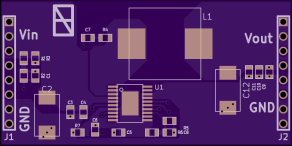Selecting an EDA software
With my work I often have to draft preliminary schematics to give to a customer to help them quickly implement a design (and I also enjoy putting together schematics for pet projects). To this end I have tried to utilize many many EDA (Electronic design automation) software suites and each has left me underwhelmed or caused some issue either through install issues or support structure. After some deliberation, trial, and error I have decided to take up using KiCad as my primary EDA software for both my personal endeavors and business needs. This past week I have been going through the provided tutorials and have started to pick up the ins and outs for a beginner, I am in no way an expert in using EDA’s (most of my experience is only with schematic capture) and I will mostly be picking this whole board design thing up from scratch. What I will document going forward will be my learning process (including the few things I have picked up so far) mainly for my record and future benefit, if anything here helps you out then hooray.
I will start out with why I chose KiCad. Simply put I had two major requirements,
- Ease of sharing my designs and settings across multiple machines with a simple setup
- No licensing fees/restrictions that could potentially limit any future growth with platform or limit access to my designs if my licensing situation changed
KiCad’s lack of licensing requirements plus the relatively isolated install it is possible to install KiCad in a normal Dropbox folder and using the very user-friendly Dropbox install package have it setup and ready to go on any windows machine within around 5 mins (not including sync time) meeting my first requirement. Also KiCad is not just a hobby functional EDA software package with the option to upgrade (like Eagle), it is a full blown package that allows me to design and layout boards far beyond the needs of practically any hobbyist (good for my work related needs or any project that gets out of hand) while having an active user support community rather than a help line from a large corporation thus fulfilling my second need. Having fulfilled my two simple requirements it was time to give KiCad a shot and I have to say I have been more then pleasantly surprised with it so far.
My plan for the next post is to cover the install and setup process to get KiCad working on a dropbox folder as well as some basic setup options for the schematic editor.
Filed under KiCad
Tagged as EDA, KiCad, Learning
